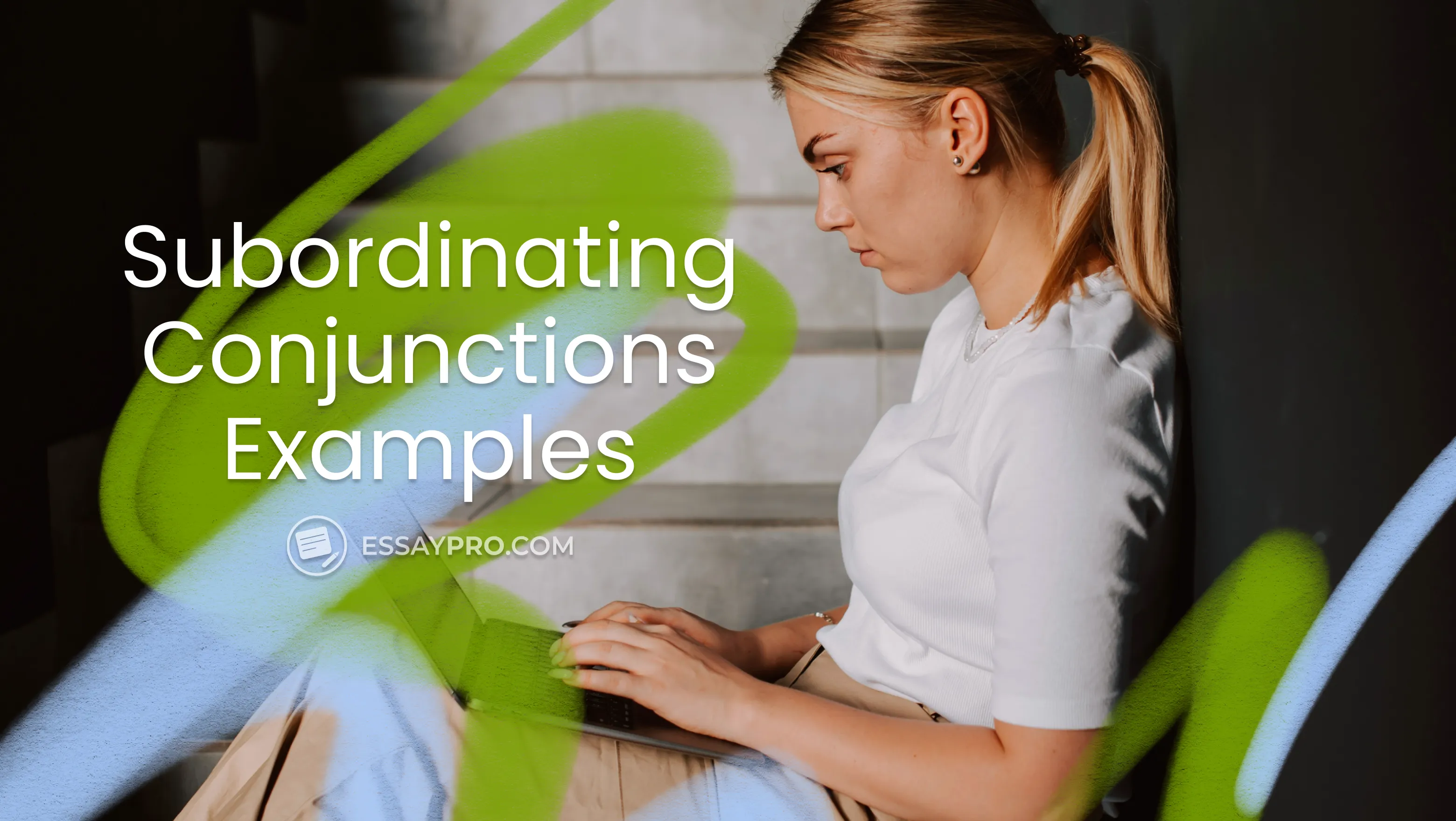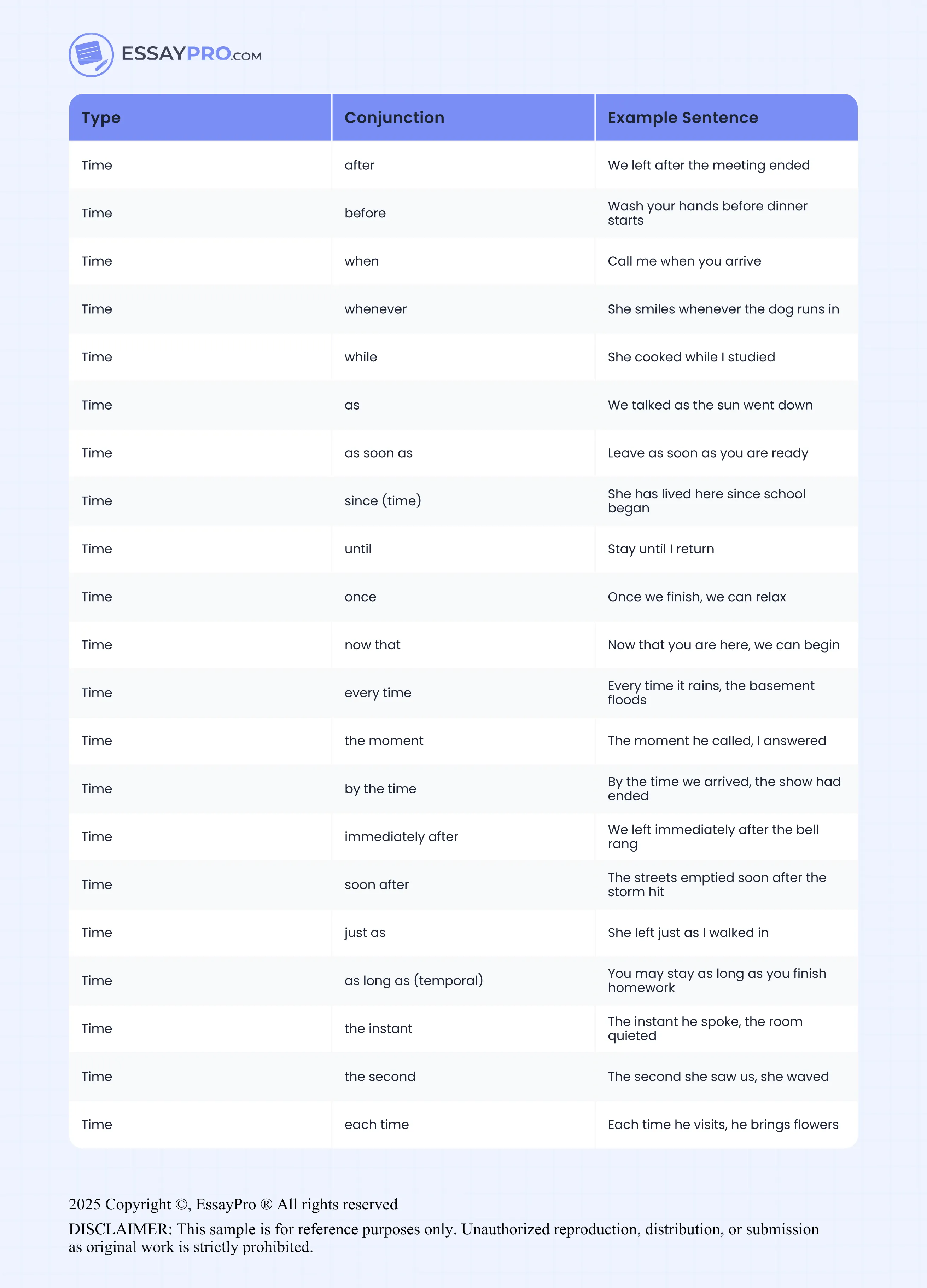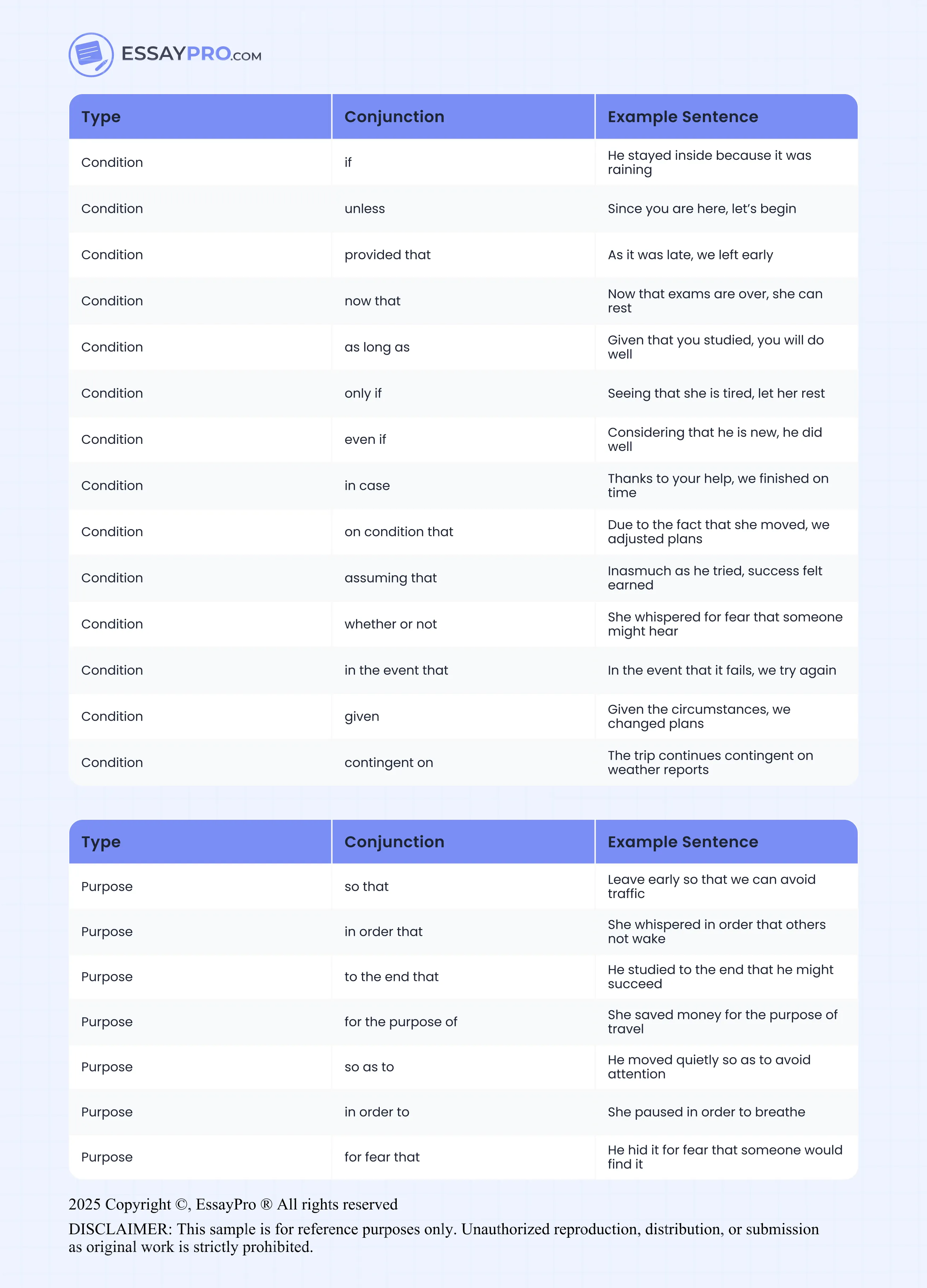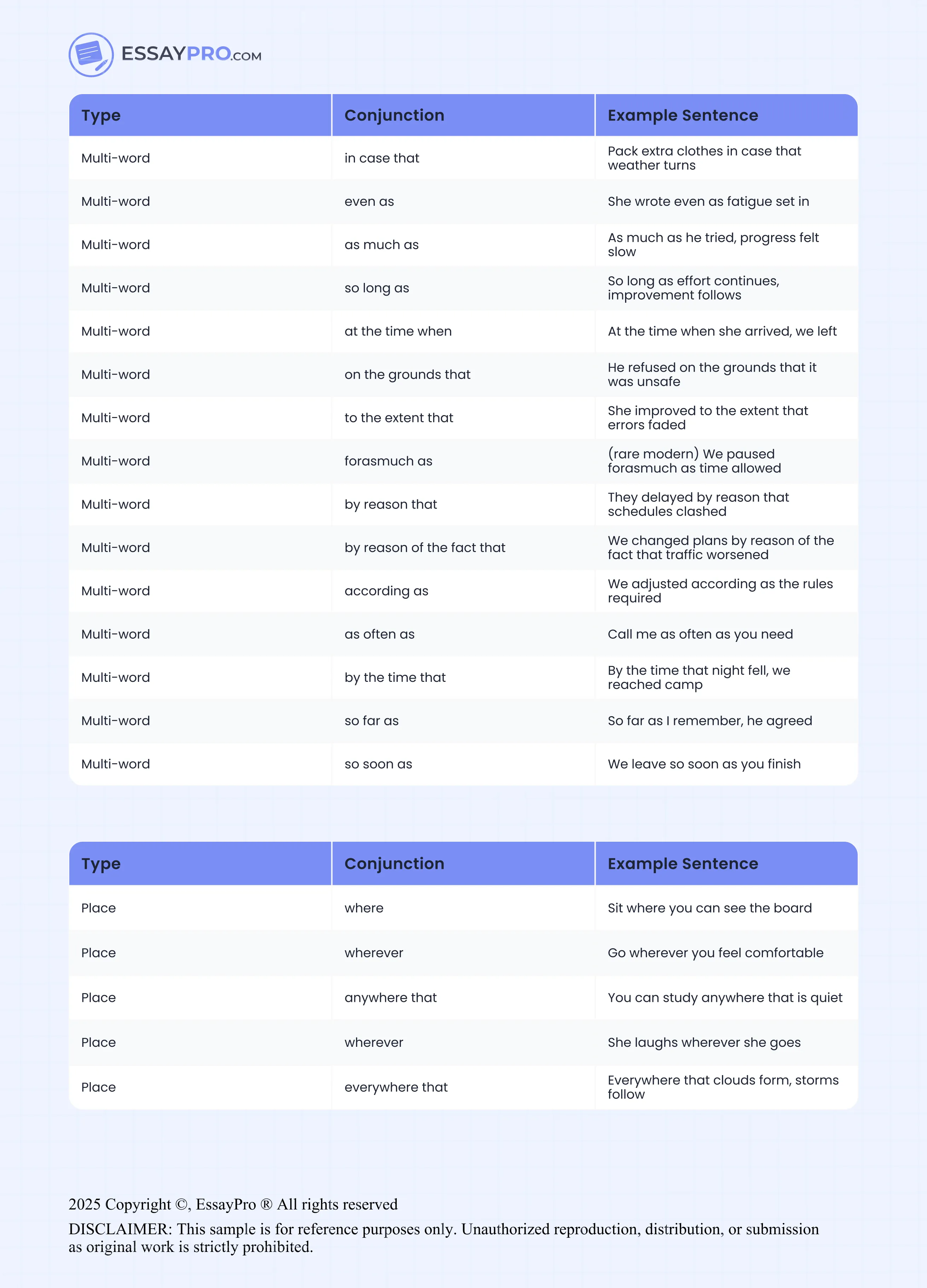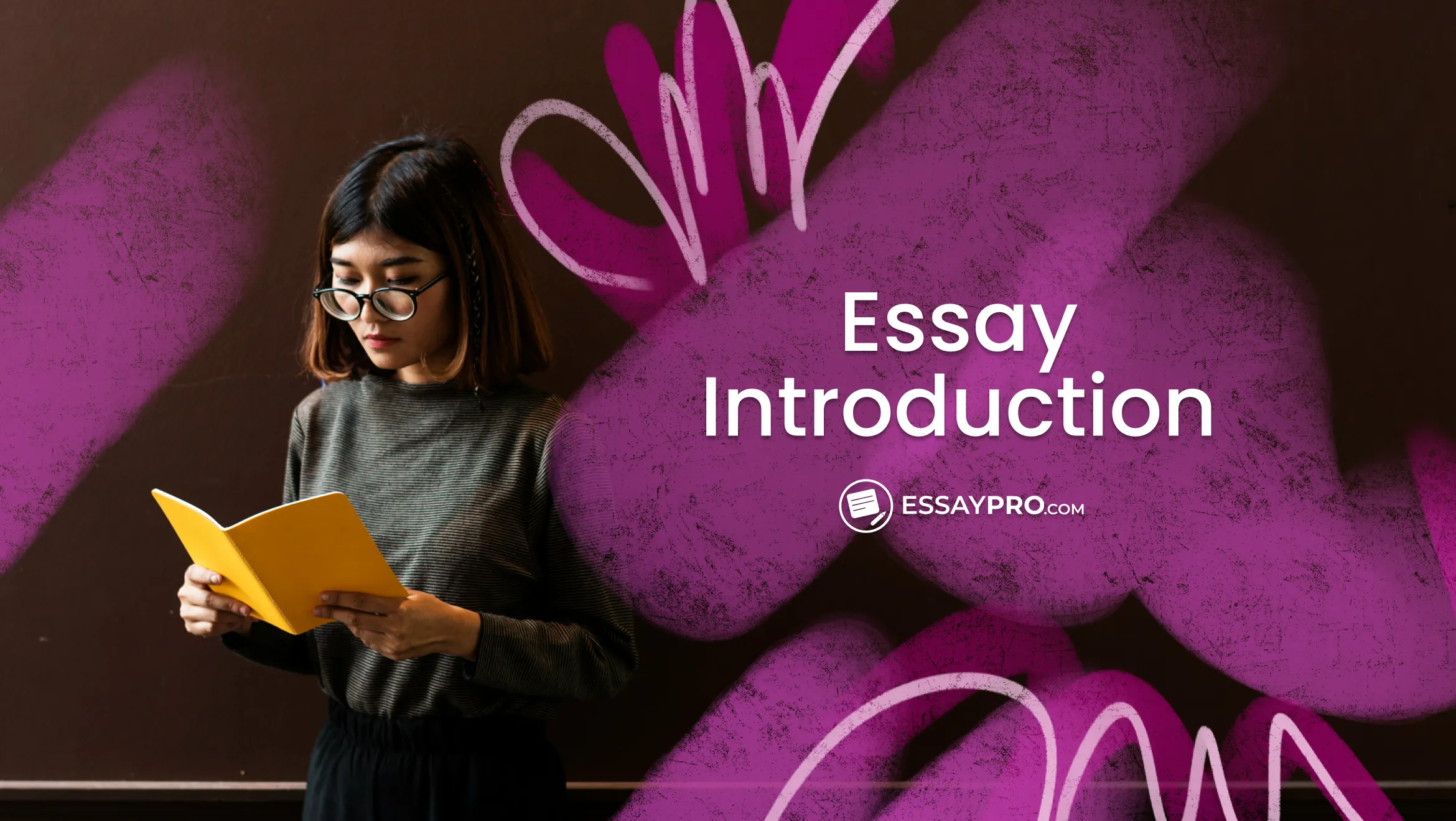Subordinating conjunctions link a dependent clause to a full sentence in a way that adds context the reader needs. They signal ideas such as cause or time and help shape a smoother flow between thoughts. Words like because, although, when, if, and while guide the shift. In sentences such as ‘She went to bed because she was tired’ or ‘Although it was raining, we kept walking,’ the conjunction sets the relationship and shows how the ideas fit together.
This article will give students a clear understanding of how subordinating conjunctions work and their importance in real writing. If you ever need help polishing your structure or shaping assignments that rely on strong grammar choices, EssayPro offers human assistance and guidance that can steady the process.
What Is a Subordinating Conjunction?
A subordinating conjunction is a word that introduces a dependent clause and links it to an independent clause to show a specific relationship. These words express relationships such as time (when, after), cause (because, since), condition (if, unless), and contrast (although, whereas). Once a subordinating conjunction is added, the clause can no longer stand alone. It leans on the independent clause to complete the meaning.
Example:
Because the road was blocked, the driver turned around.
A List of Subordinating Conjunctions Examples
The PDF file below organizes the most common subordinating conjunctions by purpose, gives clear examples for each one, and shows how they shape meaning inside real sentences. It is built for students who want a clean reference they can rely on while drafting essays or analyzing sentence structure. If you need more context-driven practice, you can also check a rhetorical situation example inside our latest article.


Subordinating Conjunctions of Time
Our minds think in moments, in times. We know something happened, then followed another thing, all while something else entirely was going on. With conjunctions of time, we put these moments in a line so that it makes sense for the reader, just like it does for us. Did something happen after another event? While something else was going on? Before it even started?
Here’s how they work:
Subordinating Conjunctions of Place
We need to know where the story happened. Place gives context. Place conjunctions help us tie two sentences together by showing location or movement. With them, we guide the reader through space.
Here’s what that looks like in action:
Subordinating Conjunctions of Cause and Effect
We need to explain why something happened, not just what happened. That’s where these types of subordinating conjunctions come in. They link two ideas by showing the reason something happened or the result that followed.
We use them all the time without even thinking, because our minds naturally look for connections. One thing leads to another, and these words help us put that into writing. They’re perfect when you want to show the ‘why’ behind the action.
Here’s how they look in everyday sentences:
Subordinating Conjunctions of Condition
Our understanding of the world is built upon conditional thinking. Our minds are always scanning possibilities, making guesses, planning next steps based on ‘what if.’ Language reflects that instinct with subordinating conjunctions of condition.
These words introduce a situation that may or may not happen, and then explain what depends on it. They connect a dependent clause (the condition) to a main clause (the result). Again, the condition as a dependent clause can’t stand alone, it only makes sense when you tie it to what it affects.
Here’s how they work:
Subordinating Conjunctions of Contrast
Subordinating conjunctions of contrast come in when two things can be true at the same time, especially when these two don’t match. They help us show the push and pull between what we expect and what actually happens.
These words connect two ideas that don’t completely agree. One part sets something up, and the other challenges it. It’s how we say, ‘Although this was true, that still happened.’
Here are a few in action:
Subordinating Conjunctions of Concession
Things still happen even when the odds are against them. And this is exactly what subordinating conjunctions of concession are for. They show how something happens when it shouldn’t.
These conjunctions are used for connecting two seemingly disagreeing ideas that are both still true. One clause admits a limitation, obstacle, or opposing fact. The other shows that it didn’t stop what happened next. It’s how we say, ‘Yes, this was true, but even so…’
Here’s how they work in real sentences:
Using Commas with Subordinating Conjunctions
Using commas with subordinating conjunctions is pretty straightforward. There’s one rule: it depends on where the dependent clause shows up. If the sentence starts with a dependent clause, we use a comma. If it ends with a dependent clause, we don’t use a comma.
Example:
✅ Although the dog was barking, the baby stayed asleep.
✅ The baby stayed asleep although the dog was barking.
And this is what doesn’t work:
❌ Although, the dog was barking, the baby stayed asleep.
❌ The baby stayed asleep, although the dog was barking.
Doesn’t matter if you're writing a sentence or an entire research proposal, making sure your ideas connect clearly is a must.
Meanwhile, read our article to better understand the writing process with a research proposal example.
Final Thoughts
Often overlooked, these small words contribute significantly to making writing clearer. We couldn’t show two ideas connected with each other without subordinating conjunctions. Here’s what to take away with you:
- They link dependent and independent clauses
- Every type demonstrates a different relationship between ideas
- We use a comma when the sentence starts with a dependent clause
- Common ones include because, if, while, and although
And if you’ve ever felt like grammar was slowing down while expressing your ideas, or just want your writing to be the best version there is, EssayPro will help you every step of the way, not just with writing assignments, but data analysis, too. If you’re organizing data in Excel, ask us to ‘do my Excel homework for me’ and we’ll take it from there.
FAQs
What Do Subordinating Conjunctions Do?
They connect two ideas, one of which depends on the other to make sense.
How Many Subordinating Conjunctions Are There?
There are dozens, but you’ll mostly see and use the same familiar ones in writing.
What Are the Easiest Subordinating Conjunctions?
Because, if, when, although, and since. Chances are, you’ve been using them for years without even thinking about it.

Mariam Navrozashvili
She has a Master’s degree in English Literature and brings a deep understanding of storytelling, critical analysis, and language structure to her work. On EssayPro Blog Mariam writes guides on literary analysis, essay composition and language studies to help students improve their writing skills. In her free time she likes to read classic novels and discuss literary theory.
- Cambridge Dictionary. (n.d.). Conjunctions. In Cambridge English Grammar. Cambridge University Press. https://dictionary.cambridge.org/grammar/british-grammar/conjunctions
- Towson University Online Writing Support. (n.d.). Conjunctions. https://webapps.towson.edu/ows/conjunctions.htm

